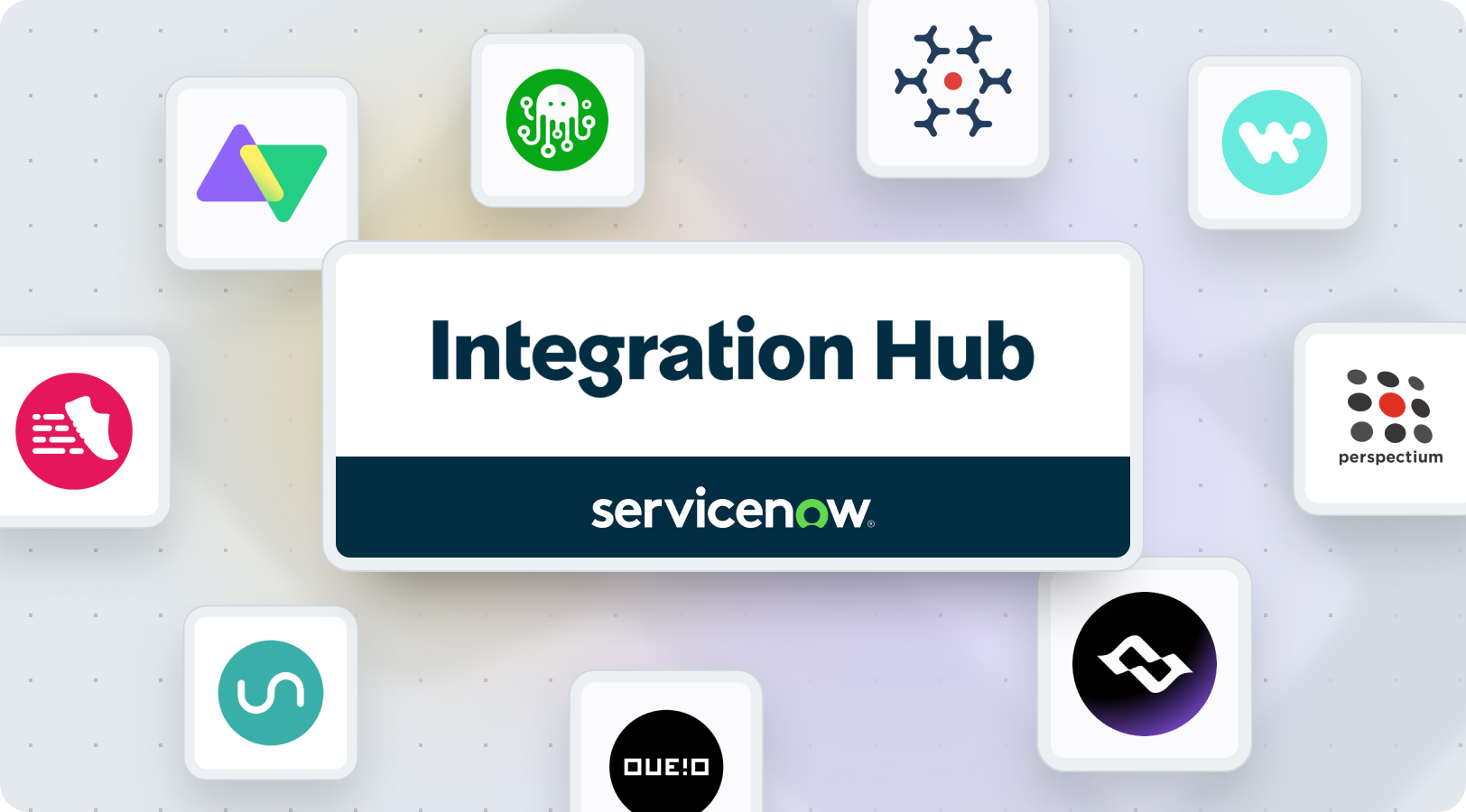Teams rely on dozens of specialized tools — from IT service management systems and DevOps platforms to collaboration and CRM solutions. Integrating them efficiently is critical to maintaining process visibility, reducing manual work, and improving service quality.
ServiceNow’s Integration Hub was created to address exactly this need: helping organizations connect the ServiceNow Platform with external systems and automate processes across teams.
However, as organizations grow and their integration requirements become more complex, they encounter challenges with integration hub’s cost, flexibility, and performance. This has led to a fast-growing market of integration alternatives — solutions that offer broader connectivity, easier configuration, and more predictable pricing models.
In this guide, we’ll explore how ServiceNow Integration Hub works, what makes teams search for other solutions, and how leading platforms — including Getint, Exalate, Unito, ScriptRunner Connect, ZigiWave, OpsHub, Workato, ONEiO, and Perspectium — compare in capabilities, cost, and ease of use.
What Is ServiceNow Integration Hub?
ServiceNow Integration Hub is the platform’s built-in engine for connecting ServiceNow instances with external systems. It extends the capabilities of Flow Designer — ServiceNow’s visual workflow editor — by providing spokes, actions, and flow templates that allow users to trigger integrations.
Through Integration Hub, administrators can integrate ServiceNow with tools like Microsoft Teams, Azure DevOps, Slack, or third-party ITSM solutions, automating data exchange between systems.
Key components include:
- Flow Designer – a visual interface to design automation logic.
- Spokes – packaged connectors that include predefined actions for common systems.
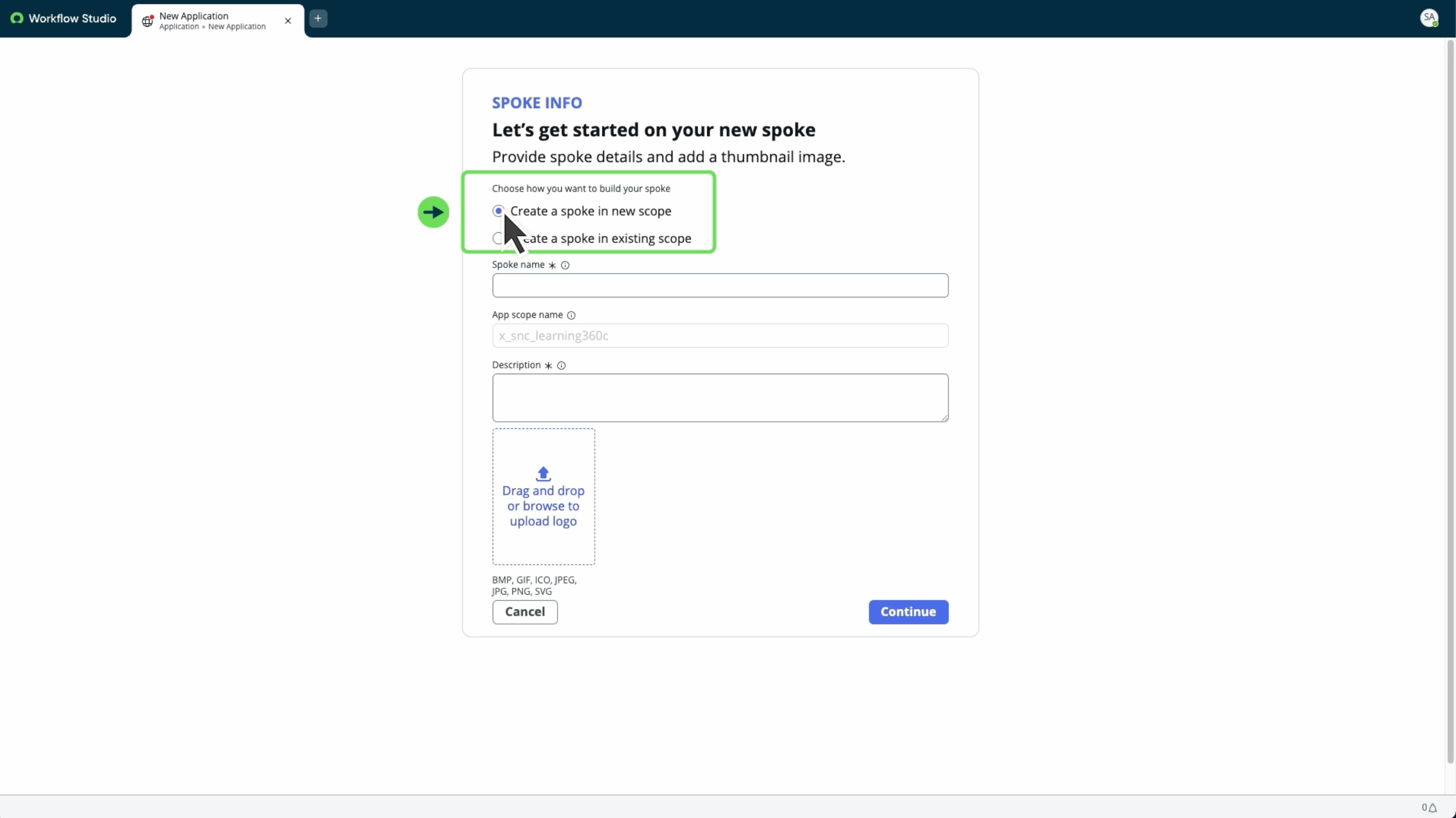
- Action Designer – enables building custom integration actions using JavaScript or REST APIs.
- Flow Templates – reusable blueprints to accelerate deployment.

Together, these elements make Integration Hub a powerful but sometimes complex solution for teams who want to integrate ServiceNow with external applications and automate routine processes.

How Integration Hub Works
ServiceNow Integration Hub allows users to build integration flows by linking triggers and actions inside the Flow Designer canvas.
For example, when a ServiceNow incident is created, a flow can automatically post a message to Microsoft Teams or open a task in Azure DevOps. Each flow runs within a ServiceNow instance and can use pre-built spokes or custom actions to connect with other applications.
While the drag-and-drop interface is approachable, creating complex logic or connecting to unlisted systems often requires scripting and custom development. Administrators must manage API credentials, authentication methods, and error handling routines to keep integrations stable at scale.
Benefits of Using Integration Hub
Despite its learning curve, Integration Hub offers several advantages:
- Centralized management – all flows and connections are maintained within the ServiceNow Platform.
- Pre-built connectors – spokes for popular applications reduce setup time and coding effort.
- Consistent security model – uses ServiceNow’s access controls and logging framework.
- Scalability – designed for enterprises that already run multiple ServiceNow processes.
For many organizations, this built-in capability simplifies IT service management automation and streamlines ServiceNow workflows without depending on external platforms, but actually there are multiple scenarios in which third-party tools shine against ServiceNow possibilities.
Common Challenges and Limitations
As integration demands grow, some teams encounter obstacles that make them consider other solutions:
- Extensive coding knowledge required – advanced flows often need JavaScript or custom REST logic to build bespoke actions.
- Performance degradation with large data volumes – synchronous flows and API limits can slow down under heavy load.
- Integration costs – licensing for additional spokes and transactions can raise expenses beyond initial expectations.
- Steep learning curve – non-technical users struggle to configure flows or debug error messages.
- Maintenance overhead – keeping custom integrations up to date requires ongoing development resources.
These factors can limit the Hub’s effectiveness for organizations seeking a lighter, more scalable approach to connecting systems.
Why Organizations Seek ServiceNow Integration Hub Alternatives
Many enterprises often operate within a hybrid ecosystem of tools — ITSM, DevOps, CRM, and HR systems. When these tools must work together seamlessly, flexibility and ease of maintenance become essential.
Common reasons teams look for Integration Hub alternatives include:
- Reducing costs of integration by avoiding per-spoke licensing models.
- Enabling users without extensive coding skills to create and maintain integrations.
- Improving efficiency through simpler interfaces and automated monitoring.
- Connecting ServiceNow and other tools beyond the Hub’s standard spokes.
- Scaling integrations across multiple ServiceNow instances or data sources without performance issues.
For these reasons, many organizations are adopting different integration platforms that combine no-code configuration with enterprise-grade functionality.
Key Features to Look For in an Alternative
Before choosing a solution, it is worth asking yourself a few questions as a team. Choosing the right integration solution depends on several technical and business factors:
- Ease of use and setup – Does the tool offer a fully visual interface or require scripting?
- Integration requirements – Does it support REST, SOAP, webhooks, and complex authentication methods?
- Pre-built connectors and templates – Are there ready-to-use flows for apps that we are using?
- Performance and scalability – How well does it handle high transaction volumes or multiple instances?
- Fully configurable logic – Are there options for advanced users to add custom conditions or data transformations if needed?
- Support and monitoring – Does the vendor provide tools for error tracking, logging, and alerting?
- Costs and licensing – Is the pricing transparent and predictable for growth?
- Access management and security – Is there a support for role-based controls and audit logs across connected systems?

A clear evaluation framework helps your team compare options objectively and align the choice with both technical and budget goals.
Comparing Popular Integration Solutions
We’ve now reached the heart of our comparison. Below we assess how each option approaches ServiceNow integrations — including two-way synchronization, scalability, pricing clarity, setup effort, and governance. We also highlight which personas are best suited for each solution (technical admin, ITSM owner, project manager, MSP/consultant, security lead).
But before we jump straight into comparing products, it’s useful to clarify different approaches to integration — specifically the difference between code-based, low-code and no-code models. Understanding this will help you match the right category of tool to your team’s skills and long-term strategy.
Understanding Integration Approaches: Code-Based vs Low-Code vs No-Code
Integration platforms today fall into three broad categories:
- No-Code tools allow business users or process owners to build connectors and flows entirely through visual interfaces, without scripting. This approach maximises speed and accessibility.
- Low-Code solutions provide visual design first, but enable admins or citizen developers to add custom logic (field mappings, filters, transformations) when required. It strikes a middle ground between accessibility and flexibility.
- Code-Based systems assume technical teams will script integrations from scratch or heavily customise built-in actions. They offer maximum control but require development resources and longer implementation times.
When evaluating alternatives to ServiceNow Integration Hub, it’s critical to identify which mode matches your organization’s skills, team structures, and integration maturity. A no-code solution might unlock immediate value for process owners, while a low-code or code-based tool may be needed for complex, custom logic or multi-instance synchronization.
Getint
Getint, among other integration platforms, can be featured for combining no-code simplicity with enterprise-grade flexibility. It’s built to synchronize ServiceNow with tools such as Jira, Azure DevOps, Zendesk, and Asana — allowing teams to automate processes and maintain data consistency without writing a single line of code.

Setup is intuitive: users can configure two-way synchronization, map fields on a granular level, and define how data flows between systems. Synchronizations run on scheduled intervals, and any issues are visible directly in the interface through logs and status indicators, making troubleshooting straightforward.
One of Getint’s key advantages is deployment flexibility. Organizations can choose between SaaS and On-Premise setups, ensuring compliance with internal data-security and privacy policies. Combined with a fixed per-connection pricing model, this makes cost planning predictable — a major difference from usage-based pricing common in many different tools.

Pros:
- No-code configuration with field-level mapping and direction control
- Scheduled synchronization with transparent error-handling visibility
- SaaS or On-Prem deployment for full data ownership and compliance
- Predictable per-connection licensing model without usage-based fees
- Designed for ITSM, DevOps, and cross-team collaboration use cases
Cons:
- Focused scope on work-management and ITSM ecosystems rather than wide enterprise iPaaS coverage
- Advanced analytics typically handled within connected platforms rather than natively
Best for: Organizations seeking secure, scalable, and low-maintenance ServiceNow integrations that combine no-code usability with predictable pricing and deployment flexibility.
Pricing: Fixed-fee pricing model based on the number of connections. Example from official pricing: 1 Jira ↔ 1 Azure DevOps connection counts as one license. Discounts apply when purchasing multiple connections. Transparent pricing — no per-task or per-transaction billing.

Visit Altassian Marketplace to try Getint for free.
The table below highlights the main differences between ServiceNow Integration Hub and Getint — focusing on functionality, deployment flexibility, customization effort, and total cost of ownership. This brief overview helps illustrate how Getint simplifies what often requires significant development work inside the native integration hub.
Now let’s look at other leading platforms and how they differ in approach, complexity, and scalability.
Exalate
Exalate appeals to organizations that prioritize flexibility and scripting power. It uses a distributed architecture where each system executes its own synchronization logic, enabling detailed control of data flow.
This architecture makes it excellent for complex, multi-instance setups, but it also demands development skills and ongoing maintenance.
Pros:
- Highly customizable scripting environment
- Supports multi-instance ServiceNow connections
- Fine-grained control over fields and synchronization rules
Cons:
- Requires coding expertise for setup and upkeep
- Steeper learning curve for non-technical teams
Best for: Enterprises with dedicated technical resources who need full scripting control and independence between instances.
Pricing: ServiceNow connector $389/month (billed annually); other platforms vary by hosting model.
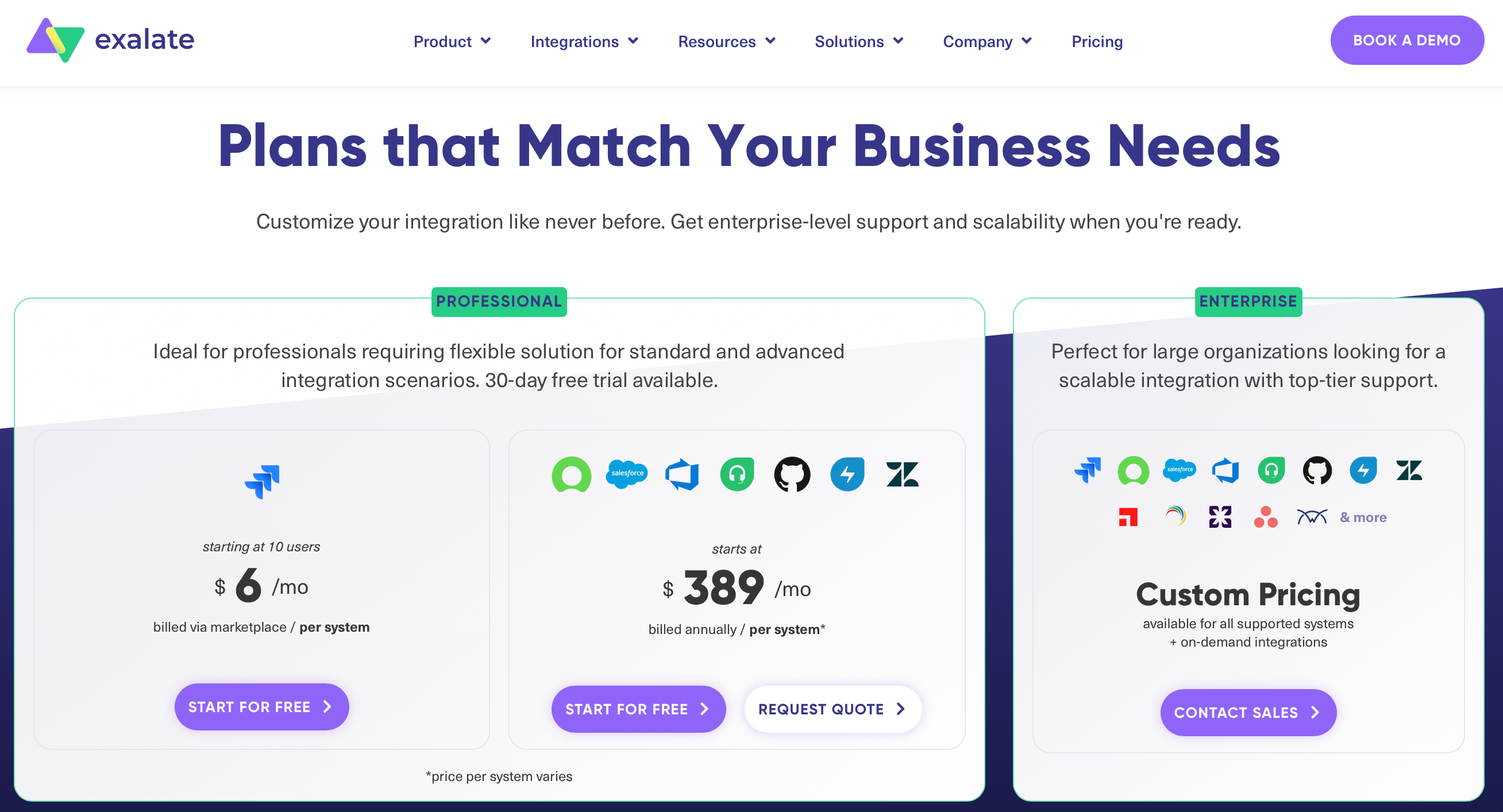
Unito
Unito focuses on no-code automation and ease of use. Its visual interface allows users to connect ServiceNow with tools like Trello, Asana, or Jira in just a few clicks. It’s great for quick wins and basic synchronization between teams.
However, it’s less suited for enterprise-grade ServiceNow workflows or custom field mapping requirements.
Pros:
- Intuitive, business-user-friendly interface
- Fast setup with minimal configuration
- Strong for lightweight, one- or two-way synchronization
Cons:
- Limited flexibility for complex workflows
- May struggle with high data volumes or advanced mappings
Best for: Teams seeking simple, visual automation across collaboration tools and ServiceNow.
Pricing: Self-serve “Basic & Pro” plans and Enterprise plans; pricing amounts shown in-app (start a trial) and via sales for Enterprise.

ScriptRunner Connect
ScriptRunner Connect is a part of Adaptavist’s ScriptRunner ecosystem. It lets developers build automations between ServiceNow, Jira, and other systems using familiar scripting approaches.
For technical users, this means power and precision. For non-developers, it introduces a learning curve similar to Integration Hub’s more advanced features.
Pros:
- Deep customization if you can write code
- Well-integrated with Adaptavist’s toolset
- Flexible and extensible for experienced teams
Cons:
- Code-dependent setup and management
- Limited usability for business users
Best for: Developer-led organizations already invested in the Adaptavist ecosystem.
Pricing: Free $0/month (up to 4 connectors, 100 script executions/month); Basic $449/month (up to 4 connectors); Advanced $899/month (up to 8 connectors); Pro $1,499/month (unlimited connectors); Enterprise licensing set up individually.
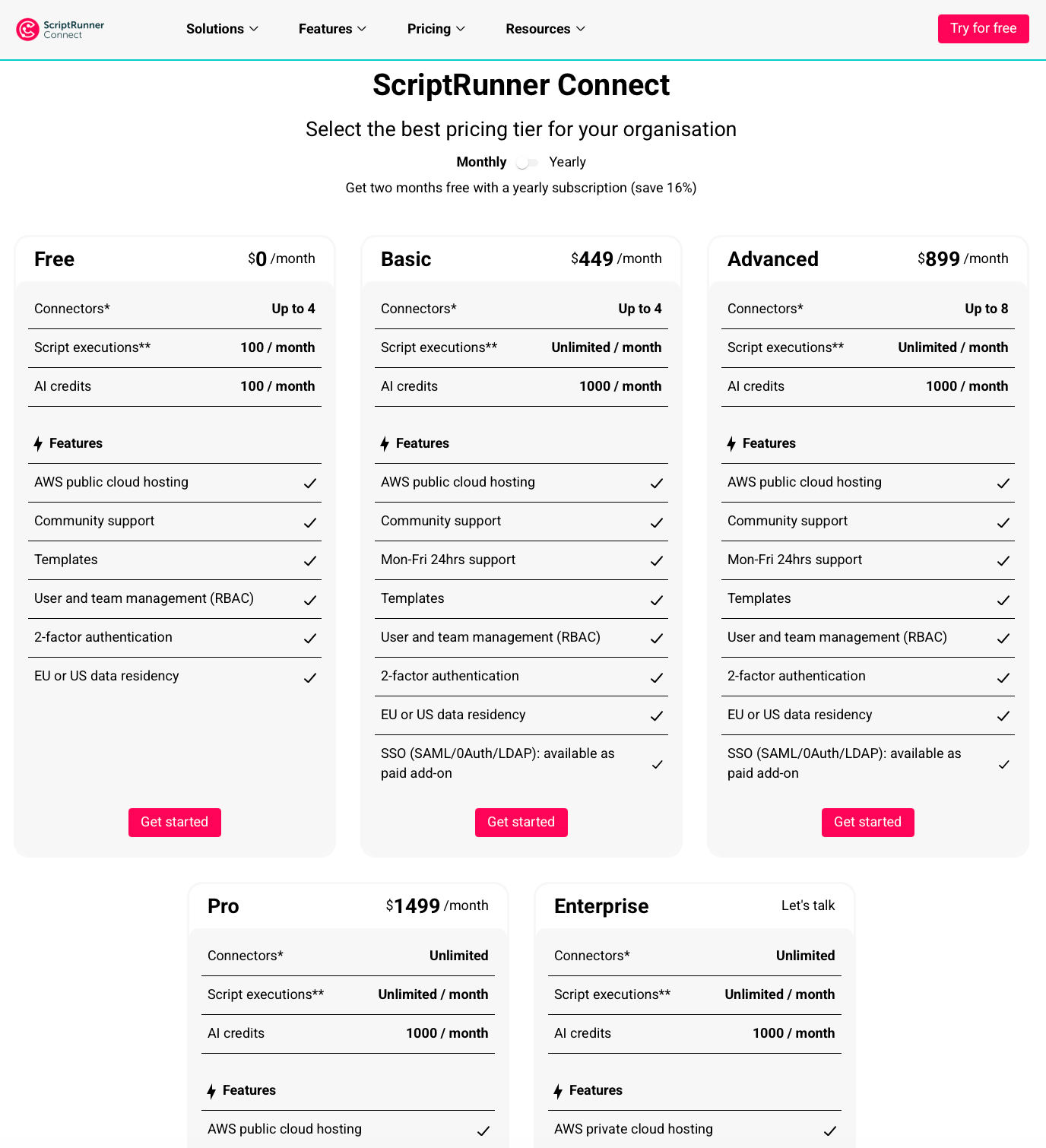
ZigiWave
ZigiWave focuses on connecting ServiceNow with IT Operations tools like Dynatrace, AppDynamics, or BMC. It specializes in synchronizing incidents, alerts, and metrics across complex monitoring stacks.
This makes it ideal for ITOM teams but less aligned with general business automation use cases.
Pros:
- Excellent connectors for ITOM and monitoring systems
- Strong real-time synchronization capabilities
- Enterprise-grade scalability
Cons:
- Expensive for smaller deployments
- Limited support for non-ITOM workflows
Best for: IT operations and infrastructure teams managing large monitoring environments.
Pricing: Fixed per-year license; two models (“regular” and “basic”); exact amounts via sales.
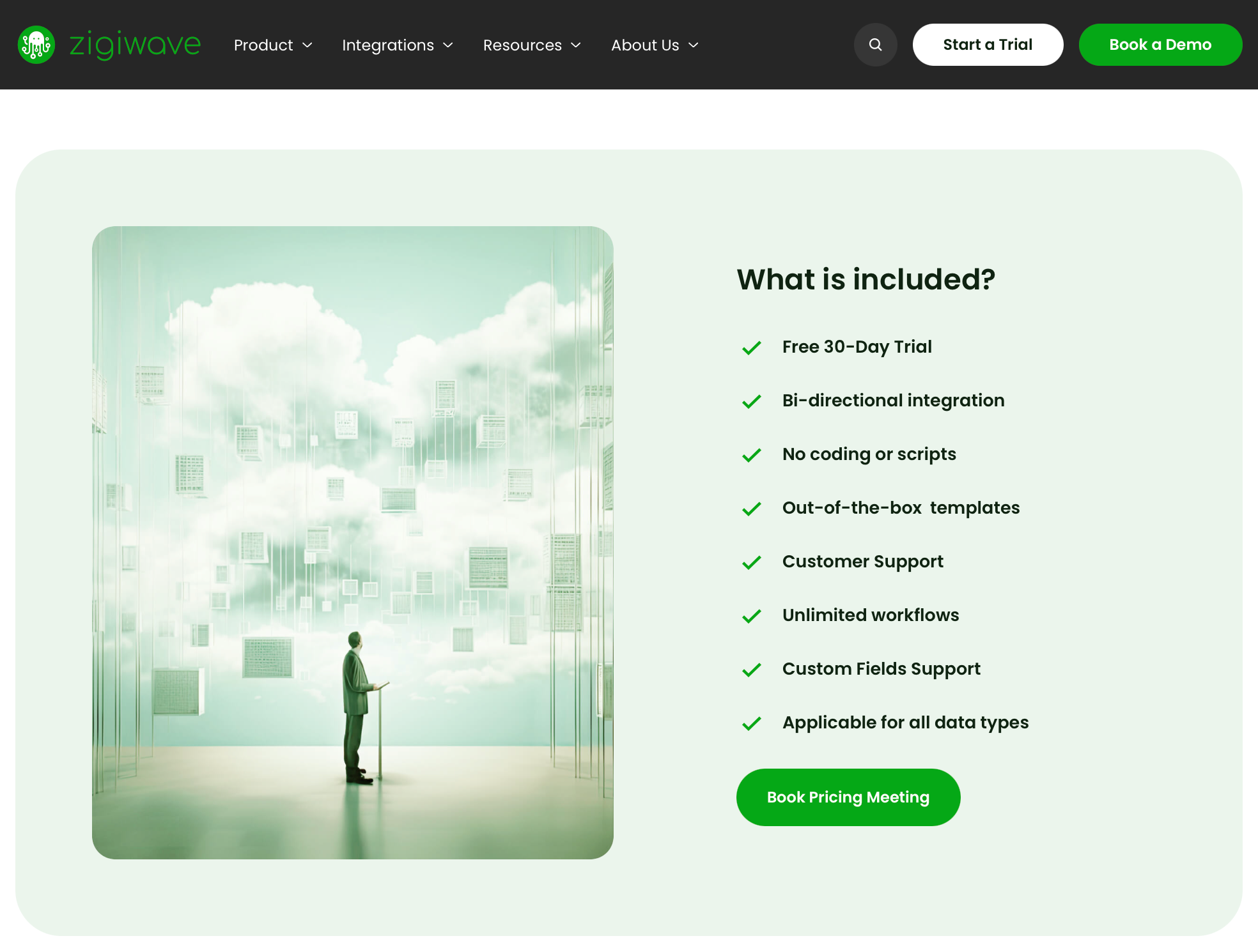
OpsHub
OpsHub is designed for enterprises in regulated industries where audit trails and data integrity are mandatory. It provides robust synchronization between ServiceNow, Jira, and other lifecycle management systems.
Setup is thorough but can be time-intensive, focusing on accuracy over speed.
Pros:
- Excellent auditability and data consistency
- Strong compliance and traceability features
- Supports complex enterprise toolchains
Cons:
- Heavy implementation process
- Costly compared to lightweight tools
Best for: Highly regulated enterprises requiring full data traceability and compliance assurance.
Pricing: Starter / Professional / Ultimate plans; pricing available on request.

Workato
Workato sits at the top end of the integration market as a mature iPaaS platform. It offers thousands of pre-built “recipes” and AI-assisted workflow design, supporting everything from finance automation to ITSM synchronization.
Its power and breadth come with complexity and cost, which can make it excessive for smaller ServiceNow teams.
Pros:
- Extensive integration library
- Enterprise-grade governance and security
- Supports both IT and business use cases
Cons:
- Complex pricing and licensing
- Requires training for advanced features
Best for: Large enterprises with centralized integration teams and multiple departments using diverse systems.
Pricing: Usage-based, workspace + task/recipe model; pricing provided by sales.

ONEiO
ONEiO offers a managed approach to integration, calling itself a “Service Integration as a Service” provider. Instead of designing each connection yourself, ONEiO handles the routing and transformation between systems.
It’s ideal for MSPs or companies that prefer managed operations, but its dependence on a hosted model may not suit data-sensitive organizations.
Pros:
- Managed service reduces maintenance
- Pre-built endpoints for many service systems
- Strong reliability and monitoring
Cons:
- Less flexibility for in-house configuration
- Cloud-only deployment may limit use cases
Best for: Managed service providers or enterprises wanting minimal internal maintenance.
Pricing: Starter 99€/month; Professional 499€/month; Enterprise Starting from 900€/month; Service Provider Starting from 1,500€/month.
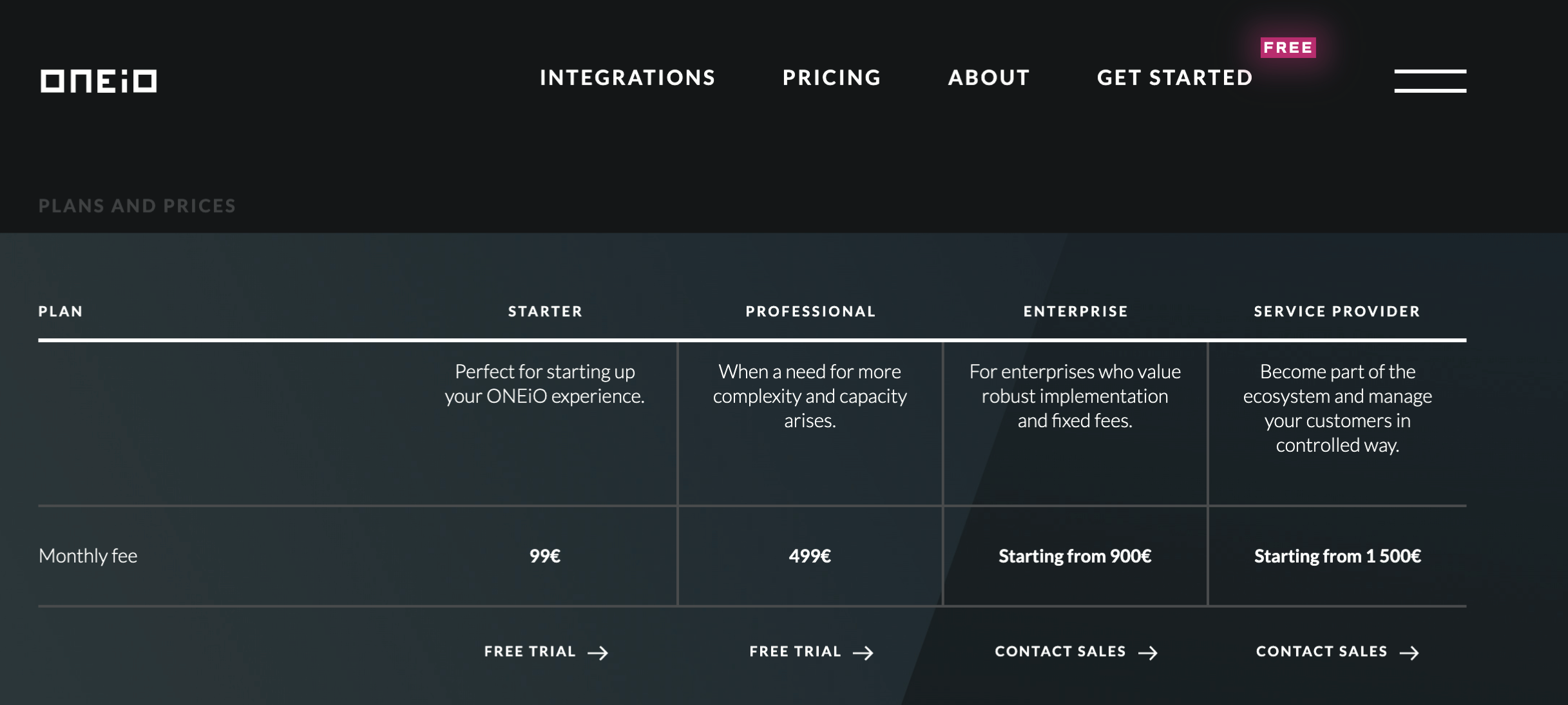
Perspectium
Perspectium remains a favorite for ServiceNow-heavy organizations needing to move large data volumes between instances or into analytics environments. It’s built directly on ServiceNow and optimized for reliability at scale.
Rather than a low-code workflow designer, Perspectium focuses on data replication — ensuring records move securely and consistently.
Pros:
- Excellent performance for large data transfers
- Strong ServiceNow-native integration
- High reliability and throughput
Cons:
- Limited customization of individual workflows
- Primarily replication-oriented rather than process automation
Best for: Enterprises managing high-volume ServiceNow data who prioritize throughput and reliability.
Pricing: DataSync Free $0/month (1M records/month); DataSync Express $1,000/month (5M records/month); DataSync Standard $3,000/month (10M records/month); Professional Contact Us (50M records/month); Enterprise Contact Us(>200M records/month).

Final Thoughts — Integrations Built for People, Not Just Systems
Integration isn’t just about APIs — it’s about enabling people to work together without friction.
ServiceNow Integration Hub remains a powerful option for many, but modern organizations increasingly value speed, transparency, and manageability. Among today’s options, Getint stands out by being a no-code platform that’s powerful enough for admins, predictable enough for managers, and secure enough for compliance teams.
Whether you’re automating incident routing, synchronizing tickets, or bridging ITSM and DevOps, the future of ServiceNow integrations lies in tools that blend automation, clarity, and trust — we know that building integrations for people, not just systems, supports productivity and communication.

